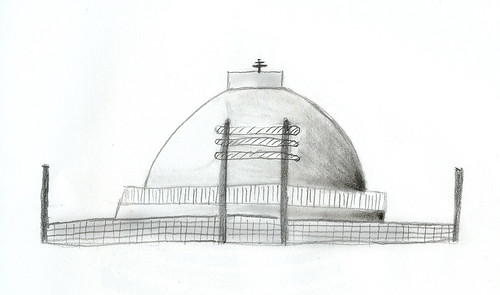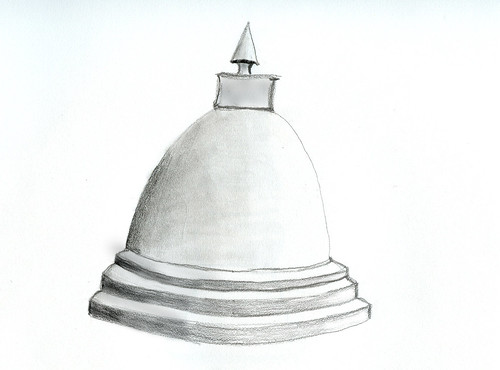Sunday, January 27, 2008
I believe all artists must have heard (or said) this phrase in one form or another: "everything has been done". It's almost defeatist, "why keep working if my art isn't original" we would say. However I think (and hope) that most of us know that there is more good in the fact that "someone did it before" than bad. These artists and their works can be a source of inspiration, challenge, questioning, intrigue and much more that can benefit our own work. Personally, my problem hasn't been with dealing with this fact it has been with finding artist that do artwork that is similar to mine. I know they are out there, it's just a matter of looking for them. Still I find it difficult.
But today I found the website of Jeff LeFever's art project and I think that it has several elements that are similar to my own installation. His project deals with painting 66 works each one representing one of the books of the Bible. The paintings would consist of a cross with a cloud formation on the inside that would represent the message of the book. He would also write the whole book on the on top of the image in the language it was written. Because he is writing the whole book on the canvas, the size depends on the size of the book; he calculates that the largest painting would be 30 feet tall. Apart from the shape of the clouds, another element he uses to convey his message is through his use of color both in the cloud inside the cross and in the outside the cross. In fact, he plans to write the text in 23 Kt gold leaf as it symbolizes the importance the message these books have.
Personally, I feel that his project is extremely ambitious; in fact I still don't know if he has been to finish any of the paintings. However, his approach to interpreting something as complex as the Bible in a visual matter is quite admirable and effective. In my own project I've been having problems trying to find ways of interpreting the different elements of the stupa. For example, in one of my classes someone pointed out the problem of trying to represent "enlightenment" (not an easy task if you ask me). But on Jeff's work, he decides to use abstract shapes and color to represent the different moods/messages the books have. In particular I find interesting his process of creating each image. First he starts with how the cloud formation should look like in black and white by reading the book and finding topics he can represent abstractly on through the cloud. Then he adds color to the composition so that the message of the book is reinforced. He also incorporates other elements relevant to the book, such as twelve squares to represent the twelve tribes of
I guess if there's anything else that I admire about his project is the scale he is working with. Not only is the size of the works immense but the amount of information he has to translate into a visual format is both large and complex to interpret. In my own work I have to deal with structures whose meaning change depending on which
I heard in one of my classes that being an artist is a rather solitary lifestyle. Essentially, it's just you and you artwork. But finding other artist, such as Jeff, can help us as artist feel less alone and more a part of a community of thinkers whose ideas interweave to create new objects.







